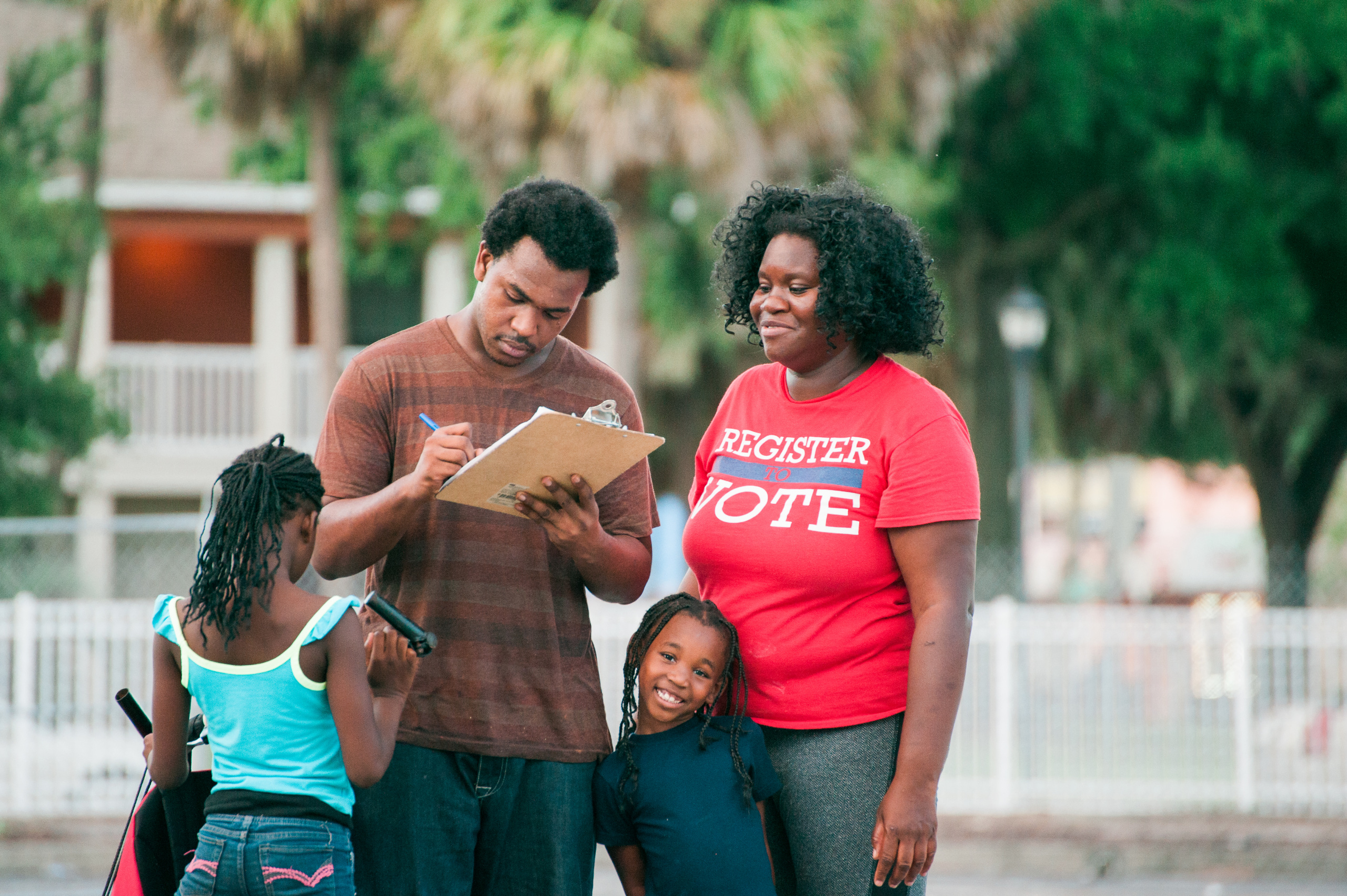Disenfranchised voters deserve action
At least 26,000 voters in Pennsylvania were disenfranchised, through no fault of their own, before the last election due to problems processing their voter registration applications. What happened?
At least 26,000 voters in Pennsylvania were disenfranchised, through no fault of their own, before the last election due to problems processing their voter registration applications.

A volunteer with the Community Voters Project registering a voter in Tampa, Fla. in the fall of 2016. Photo Credit: Trung Vo.
What happened?
The problems were initially discovered during registration drives leading up to the 2016 election, where volunteers collected voter registration forms from citizens and then returned those forms to local election officials. Such drives are a common practice across the country, particularly ahead of elections. Except in this case, many Pennsylvanians weren’t registered for weeks or months after their paperwork was turned in, if they were registered at all. Keystone Votes investigated the issue and found that thousands of voter registrations were mishandled.
There were two main problems that Keystone Votes identified.
1. Completed applications were processed late, meaning voters did not receive their voter registration card and/or were not added to the main poll books that contain the names of registered voters on election day.
2. Applications were lost.
While the majority of the issues appear to be in Philadelphia (where some 17,000 applications were processed late), the study notes: “The rate of problems outside of Philadelphia is smaller, but systemic.”
What to do about it?
Among the recommendations in the report is a call to “significantly reduce paper-based registration” by “automat[ing] voter registration.” To its credit, Pennsylvania does have online voter registration (which is available in 38 states and D.C.) but many of the back-end systems for registering voters are “rooted in an antiquated understanding of technology and communications.”
But an existing policy known as automatic voter registration (AVR) can bring Pennsylvania’s systems into the 21st century. Adopted recently by nine states* and D.C., one of the central reforms in AVR is digitizing the registration process. When someone registers to vote at the DMV or another state agency, their information would be electronically and securely transmitted to election officials, removing the need for paper registration forms.
But in this instance, AVR’s second major reform is arguably more important: it automatically registers people when they interact with a state agency. Like the DMV, many agencies collect the necessary citizenship information to register voters and this information could be used to register voters or update existing registrations. An application for a driver’s license, hunting permit, disability benefits and many other items or services could double as a voter registration.
If applied to multiple state agencies, AVR could register millions of unregistered citizens to vote — more Pennsylvanians than volunteer-based voter registration drives could ever reach. And that would make such drives (like those that revealed these problems with Pennsylvania’s election practices) less necessary because more people would already be registered.
While AVR won’t address all of the issues identified by this report on its own, it will go a long way towards modernizing Pennsylvania’s voter registration procedures and ensuring that every American can participate in the democratic process.
* Illinois will be the ninth state to pass AVR when the governor signs the legislation later this year. AVR legislation was passed unanimously in both chambers of the Illinois General Assembly and the governor has said he will sign it.

